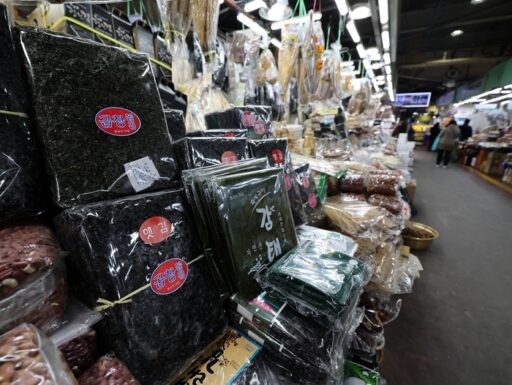Dried seaweed, a staple side dish for the public, has seen a price surge of over 40% compared to the average, prompting the government to consider reintroducing a stockpiling system for the first time in 20 years.
The Ministry of Oceans and Fisheries has announced that it is in discussions with the Ministry of Economy and Finance to implement a stockpiling system aimed at stabilizing seaweed prices by purchasing and storing it when prices are low, to be released into the market when prices rise.

According to data from the Korea Agro-Fisheries & Food Trade Corporation, as of the 8th, the average retail price of dried seaweed (medium quality) was 1,347 KRW for 10 sheets, which is an astonishing 41.5% higher than the average price of 952 KRW. This price increase has been a consistent trend since spring of last year, resulting in increased burdens for consumers.
If we examine the annual average price trend of dried seaweed, it has risen from 1,019 KRW for 10 sheets in 2023 to 1,271 KRW in 2024, and this year it surged to 1,384 KRW. The primary causes of this price increase are identified as the reduced production of seaweed in China and Japan, leading to an increase in exports of Korean seaweed.
As export volumes increase, the domestic supply has decreased, resulting in price hikes.
Increase in Seaweed Exports and Need for Stockpiling Due to Climate Change
The preference for Korean seaweed among overseas consumers has significantly increased, and as the culture of gimbap becomes known worldwide, the demand for exports continues to grow.

As a result, forecasts suggest that domestic seaweed prices are likely to continue rising.
The Ministry of Oceans and Fisheries emphasizes the necessity for stockpiling seaweed, citing increased volatility in fishing production due to climate change and the rapid increase in export volumes that may lead to domestic supply shortages. Consequently, it is also actively considering using the expanded consumer distribution logistics center currently under construction in Naju, Jeollanam-do, as a storage facility for dried seaweed stockpiling.
The dried seaweed stockpiling system was in place from 1979 to 2006 but was discontinued due to falling prices and quality degradation of the stockpiled seaweed.
If the Ministry of Oceans and Fisheries resumes the dried seaweed stockpiling system this time, it will mark its revival after approximately 20 years.
Image source: News1, illustrative photos for understanding the article / gettyimagesbank


